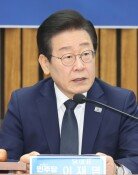Preventing child abuse and restoring teachers’ authority
Preventing child abuse and restoring teachers’ authority
Posted November. 11, 2024 07:49,
Updated November. 11, 2024 07:49
A TV program recently disclosed a closed-circuit (CCTV) footage showing a kindergarten teacher in Daegu assaulting and abusing six-year-old children. The video of a strong adult male teacher pushing children violently and hitting their stomachs with his fist infuriated many viewers. Reportedly, the victims did not tell their parents about the teacher's assault as the teacher forbade them from telling about the incident to their parents, threatening that he had a camera “that shows everything they say at home.”
News of child abuse alarms any young parent, particularly cases of child abuse committed by teachers, and raises distrust among parents. According to the Ministry of Health and Welfare, the number of cases of child abuse by elementary, middle, and high school staff reached 1,702 in 2022.
Issues of child abuse and violation of educational authority are like two sides of a coin. Parents who are suspicious that their child may have been treated unfairly by the teacher eventually cross the line and make malicious comments to teachers. Such malpractice has become quite prevalent in Korean society, as evidenced by the Seoi Elementary School incident in which a teacher who suffered from abuse by a parent committed suicide.
Controversy rose after two parents of fifth graders at an elementary school in Jeonju, North Jeolla Province have filed seven criminal complaints, three administrative lawsuits, two civil lawsuits, and sixteen information disclosure requests against their homeroom teacher since 2022. The homeroom teacher was replaced six times due to malicious complaints from parents, described as ‘an unprecedented situation in the history of public education’ by an educational ministry official.
One of the parents was even reported by Jeonbuk Provincial Superintendent of Education. The two parents reported that they had called the school 61 and 113 times, respectively, and claimed that “the calls were not malicious and legitimate requests that any parent could make.”
Teachers no longer put up with violent and unjustified claims. According to the Ministry of Education, the number of cases held by the Elementary, Middle, and High School Rights Protection Committee last year was 5,050, a 66% increase from the previous year. The Committee is a deliberation body to protect educational authority.
The offensive behavior of teachers and parents continues to aggravate distrust. “The dilemma is finding the right balance between child abuse and teachers’ authority,” said a high school teacher who was recently interviewed.
Teachers point out that one way to resolve the issue is to address the ambiguity between ‘emotional child abuse’ and ‘legitimate school life guidance.’ Some legal experts point out that the standards for ‘emotional child abuse’ stated in Article 17 of the Child Welfare Act need to be clearly specified for better understanding.
The government and the National Assembly claim to strengthen related laws whenever news of child abuse and undermining of teachers’ authority is released. The main point in resolving the issue is to find the right balance between child protection and respecting teachers’ authority. Only then would we be able to rebuild trust between parents and teachers and provide quality education at schools.
Headline News
- Korean business leaders urge a halt to commercial law amendment
- Yoon begins extensive verification for cabinet and staff reshuffle
- Police confirm Pyongyang’s involvement in Ether heist in 2019
- Ukraine fires British Storm Shadows at targets on Russian territory
- Ulsan and Pohang compete to crown Korea’s soccer champions







